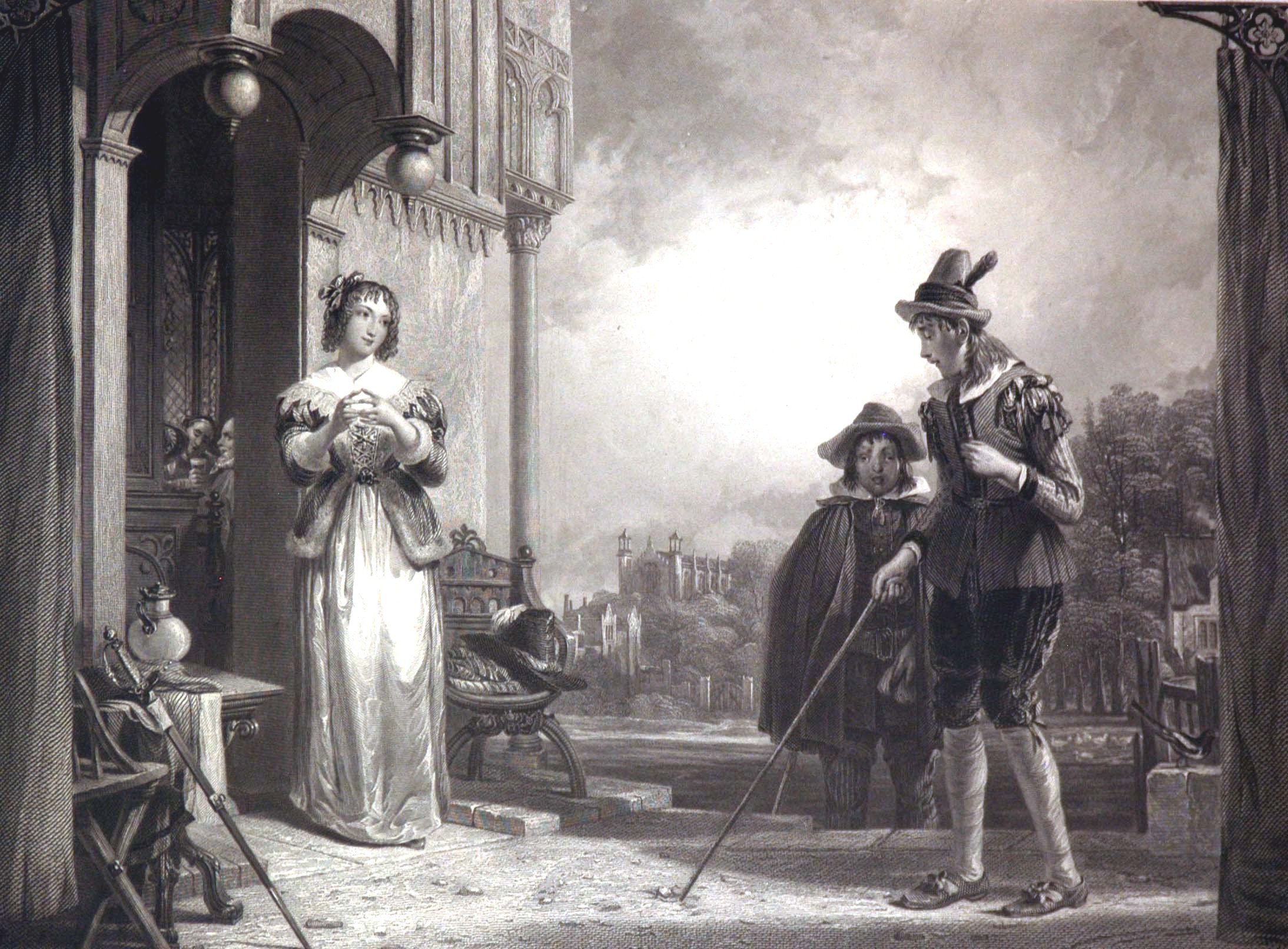|

|
| Click picture to enlarge |
Sir Augustus Wall Callcott (artist)
F. Bacon (engraver)
Anne Page and
Slender: A Scene from the Merry Wives of Windsor
Circa
1840
Engraving
on paper
11
1/2 x 8 1/2 in.
The Merry Wives of Windsor
The Merry Wives of Windsor is a comedy by
William Shakespeare, first published in 1602. It features the fat knight Sir John Falstaff in love, and is Shakespeare's only
play to deal exclusively with contemporary Elizabethan era English middle class life.
This scene depicts Anne Page meeting one of her suitors. Her mother,
Mistress Page, would like her daughter to marry Doctor Caius, a French physician, whereas the girl's father would like her
to marry Master Slender. Anne herself is in love with Master Fenton, but Page had previously rejected Fenton as a suitor due
to his having squandered his considerable fortune on high-class living. After a typically complex Shakespearean plot involving
many humiliations for Falstaff and deceits all around, Anne’s parents accept the marriage between Anne and Fenton.
The Engraving
In this scene, a very shy Slender, with his slow-witted servant
Simple by his side, attempts to woo Miss Anne Page. Trying not to laugh at his nervousness, she invites him inside her
father's house for a meal, but he tells her he is not hungry. He continues to insist that he will not eat and she continues
to insist that her family will not begin eating until he enters. This back-and-forth goes on until Master Page finally comes
from within the house and talks the reluctant Slender into joining them.
Slender's attempt to talk to Anne Page, ill-fated from the start
since she is in love with Master Fenton, is doomed by his shyness and stubborn nature. Anne Page's eyes appear to be filled
with laughter and yet she holds a sober look as she waits patiently for him to finish speaking. This patient stance in the
middle of such a ridiculous conversation would be seen as an example of her womanly virtue.
To read the scene which inspired this engraving, please click here.
The Artist: Sir Augustus
Wall Callcott
English
landscape painter Sir Augustus Wall Callcott was born in Kensington in 1779. His first study was music; and he sang for several years in the choir of Westminster Abbey. But at the age of twenty
he had determined to give up music, and had exhibited his first painting at the Royal Academy. He first studied with portrait painter John Hoppner before switching to landscape painting.
His work was reminiscent of Turner’s paintings.
He gradually rose to distinction, and was elected an associate in 1807
and an academician around 1810. In 1837 he received the honor of knighthood from the newly ascended Queen Victoria;
and served as Surveyor of the Queen's Pictures from 1843 to 1844.
He was a founding member of the Council for the Government School of Design in Ornamental
Art, which opened in June 1837; Charles Eastlake was a fellow Council member. Callcott’s landscapes display refined taste and quiet beauty. His wife, Maria, was a writer
on art and travel.
He died in 1844.
|

